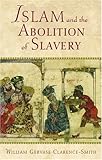Islam and the Abolition of Slavery
Material type: TextPublication details: Oxford Oxford University Press 2006Description: 293pISBN:
TextPublication details: Oxford Oxford University Press 2006Description: 293pISBN: - 9780195221510
- SS80 C541
| Item type | Current library | Call number | Status | Date due | Barcode | |
|---|---|---|---|---|---|---|
 Books
Books
|
DVK Library Stack -> Third Floor -> SS | SS80 C541 (Browse shelf(Opens below)) | Available | 11046160 |
includes index and biblioraphy
Chapters 1. Introduction: The Embarrassing Institution The nature of slavery in Islam Rhythms of expansion and contraction 6 Slave numbers 11 Orientalist contradictions 16 The logic of Islamic abolition 19 Part I. THE CONTRADICTIONS OF SLAVERY 2. A Fragile Sunni Consensus 22 Early uncertainties 23 Taking infidels in holy war 25 Slave raiding and kidnapping 27 Tribute, purchase, and adoption 31 `People of the book` 36 Conversion and freedom 39 Punishing `bad Muslims` 42 Concubines and eunuchs 45 3. Dissenting Traditions 49 Ascetics and mystics 50 Theologians and philosophers 53 Establishing a Shi`i consensus 55 Isma `Hi divisions 56 Other sects 60 Slave revolts 63 4. Customary Law 66 Liberation after a fixed term or on conversion 67 The ambiguities of ethnicity and race Slavery by birth Self-enslavement and the sale of relatives Debt bondage and serfdom Crime and taxes Female and mutilated slaves 5. Sultan`s Law Military slavery Administrative and harem slavery Mughal reforms The turning of the Ottoman tide Iran, Morocco, and other gunpowder states Part II. THE ROADS TO ABOLITION 6. Imperialism and Secularism The Maghrib between colonialism and secularism From reform to revolution in the Ottoman empire Hesitation on the Nile Middle Eastern stragglers Abolition from Inner to Southeast Asia Conflicting experiences in Africa 7. The Ulama and Quasi-Abolition Dissenting reformers South Asian Sunni pioneers and their opponents Apotheosis in the Maghrib Wider Arab reformism Ottoman conservatism Evolution in Southeast Asia Mixed responses in Africa Muslims in Christendom 8. Mystics and Millenarians Early Sufi reformism in West Africa Sufi retrogression in Africa Varieties of African Mahdism Maghribi holy warriors Jihads from the Balkans to Yunnan Risings in South and Southeast Asia Sufi jihads of the tongue` Peaceful millenarianism Integrating former slaves 9. Literalism The first Wahhabi state and its wider impact Saudi Arabia The Muslim Brothers Mawdudi and Hamidullah in South Asia Other expressions of literalism The West and the web 10. Rationalism The South Asian shock-troops of abolition South Asian gradualism The great caution of Egypt The radicalisation of the Arab world Progress in the Turco-Iranian world Southeast Asian metamorphosis Africa and the `second message` of the Quran Developments in the West 11. Timing and Comparisons The course of Islamic abolitionism Judaic approaches to slavery Catholicism and servitude Orthodox and Protestant dispositions From Hinduism to Confucianism
There are no comments on this title.
